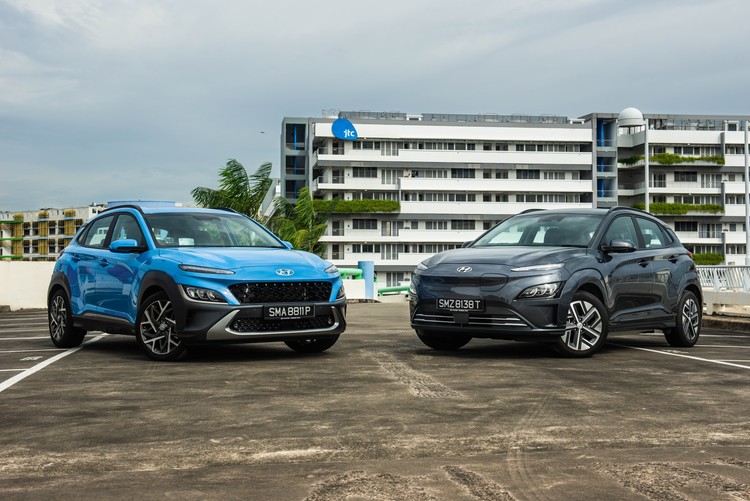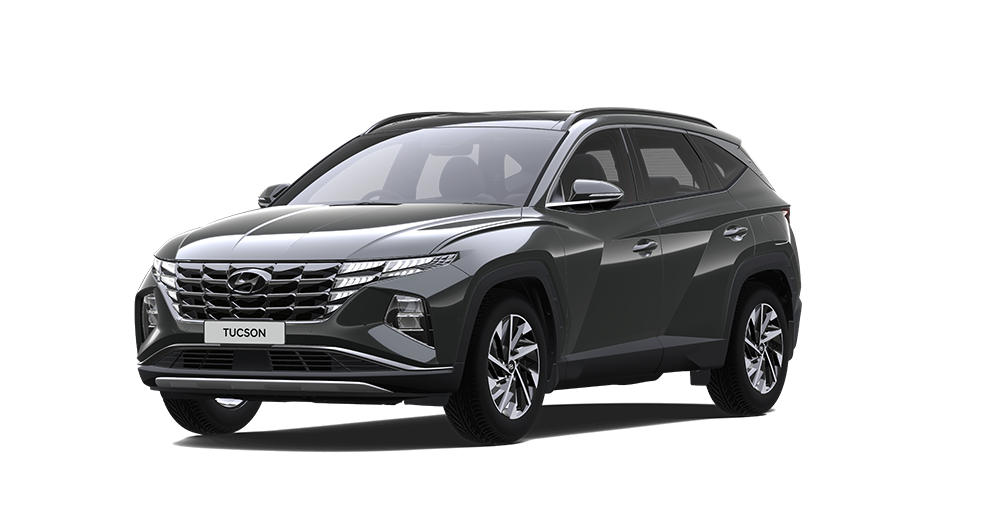What We Like
✓ Funky, modern design - those Seamless Horizon Lamps!
✓ Smooth, seamless hybrid powertrain
✓ Good real-world fuel consumption of 17.2km/l
✓ Compliant suspension with a hint of sportiness
✓ Well-equipped with a full suite of driver assists
✓ Spacious and comfortable
✓ Easy to drive
What We Dislike
✘ Wireless Android Auto did not work for me
✘ Engine comes on slightly too easily
Hyundai is one of those brands that has improved leaps and bounds in the past decade or so. Those that have been driving since the 90s or the early 2000s will remember the brand as the go-to for budget, no-frills transportation. But ask anyone that has driven any of Hyundai's recent cars, and they'll likely be telling you about how stylish and well-equipped they are.
Having driven the Ioniq 6 recently, and the Kia Niro hybrid almost a year ago (it left quite an impression), I am truly excited when I was told that I'll be getting the new Hyundai Kona Hybrid all to myself for three days. Are you wondering about the connection between these three cars? Read on and you'll find out.

Is it Robocop, is it Cyclops? No, it's the new Kona
Just like how the Ioniq 6 stands out among its peers in Hyundai's stable, the Kona is yet another refreshing crossover from the brand that manages to look distinctly different, while retaining recognisable design elements unique to the brand.
The thing you notice on the Kona is its Robocop-esque lighting element. which is a singular strip extending throughout the entire width of the front-end. While a similar lighting setup can also be found on the new Sonata and Grandeur, the Kona is the first, and currently only Hyundai here to have the Seamless Horizon Lamp on both ends.
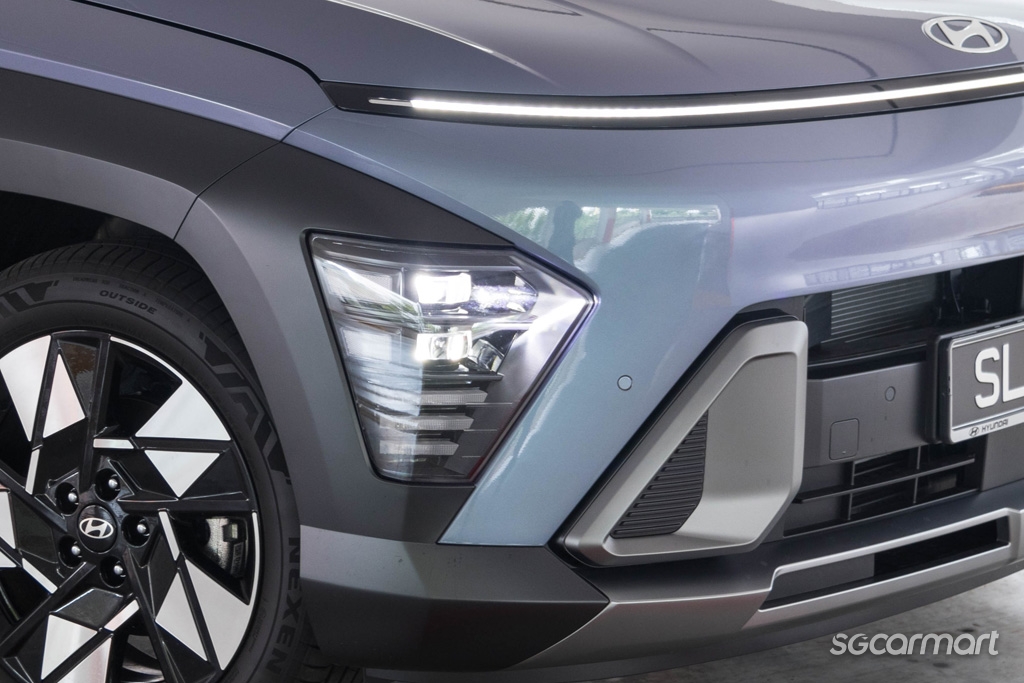
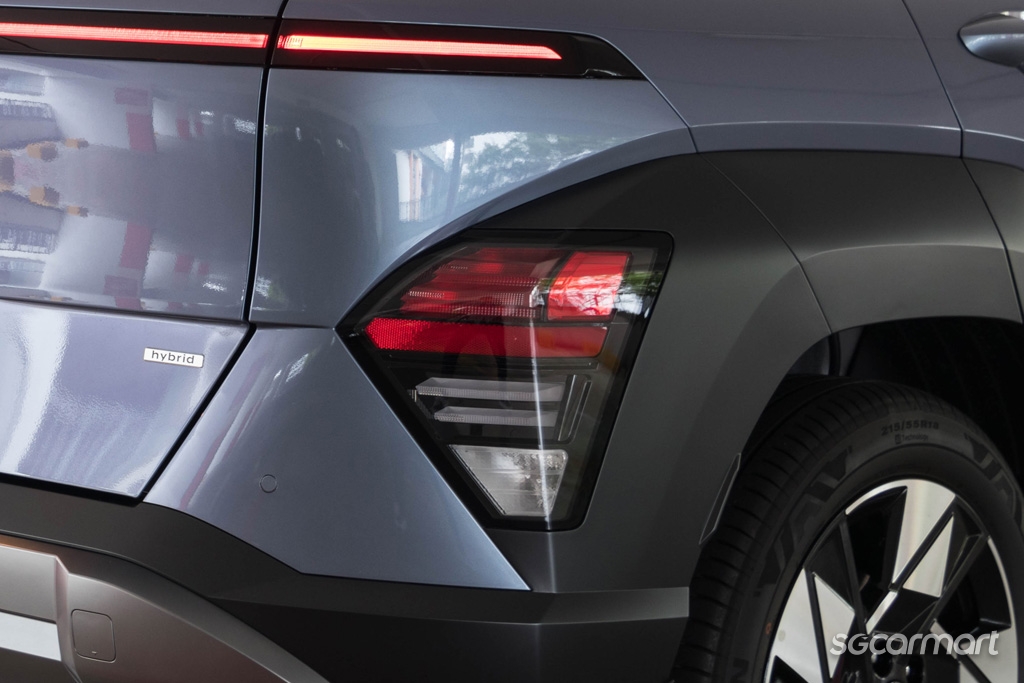
With its head and brake lights units situated on the edge of the corresponding bumpers and integrated with the black plastic cladding that makes up the wheel arches, it is clear that the designers have drawn plenty of inspiration from the original Kona that this car replaces.
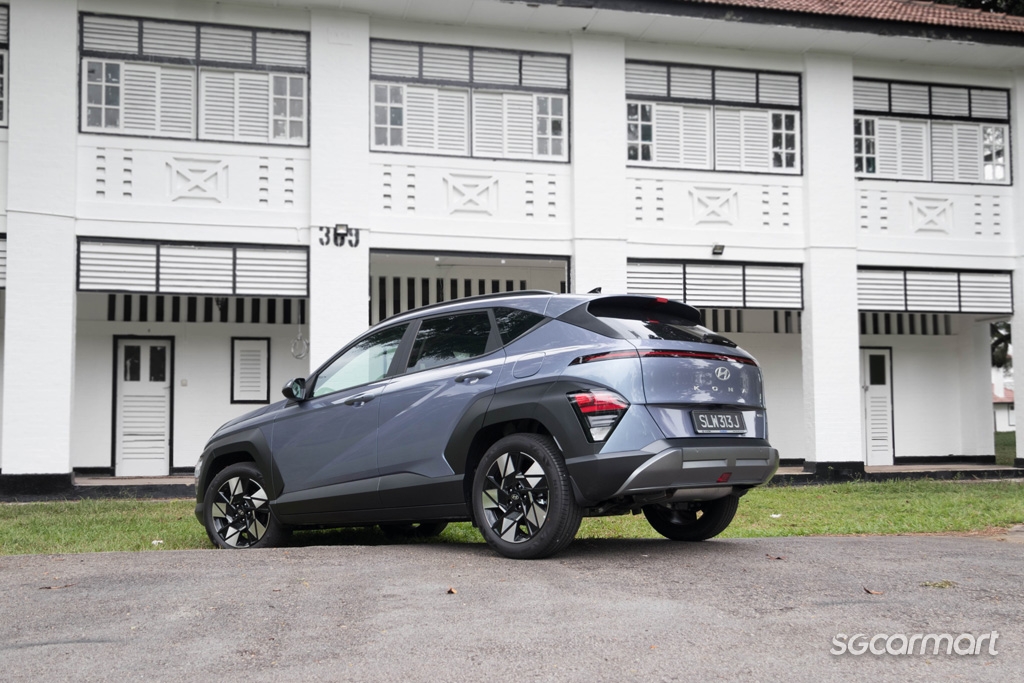
On its side, you'll notice sharp creases in the body work that complement its rounded edges with some degree of aggression - a design element that you'll find on the Avante and Tucson as well. In a sea of crossovers, the distinct and funky Kona manages to stand out from the other more conventional designs. But looks will only get you so far - what's important is the driving experience, and I am feeling pretty confident about it.

Smooth, seamless and with a hint of dynamism
You see, the Hyundai Kona and Kia Niro are built on the same platform and propelled by a similar powertrain, and here's why I've brought up the Niro. Having thoroughly enjoyed my time with the Kia Niro Hybrid, I knew the Kona would be a good drive! As expected, the hybrid powertrain is as seamless as I remember, melding the transition of full-electric power and the internal combustion engine so smoothly that you'll hardly notice if not for the light whirl of engine noise.
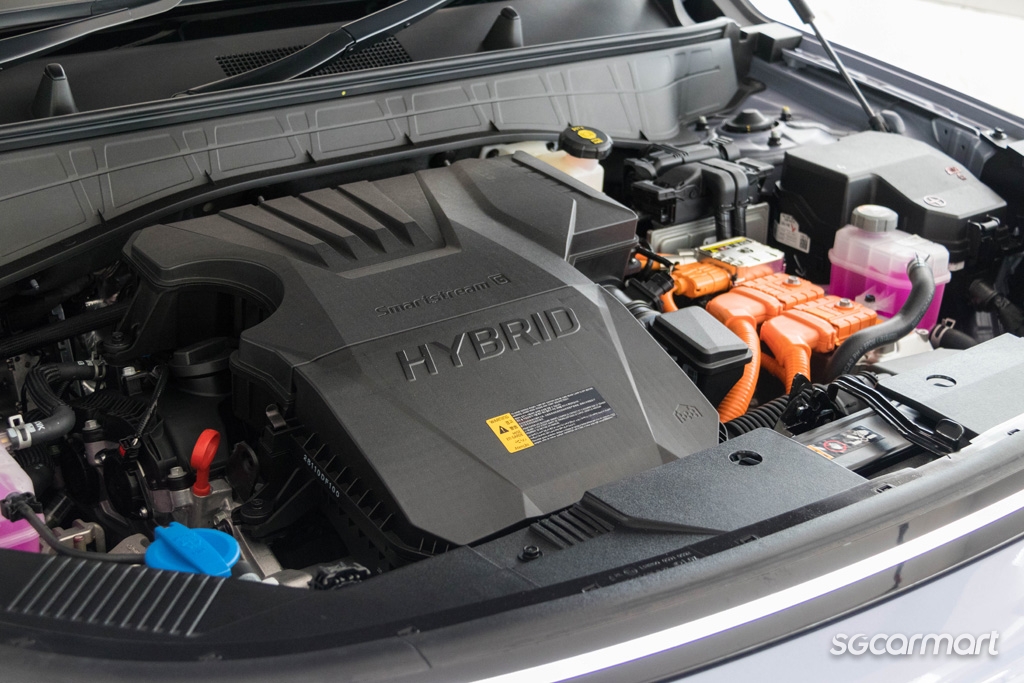
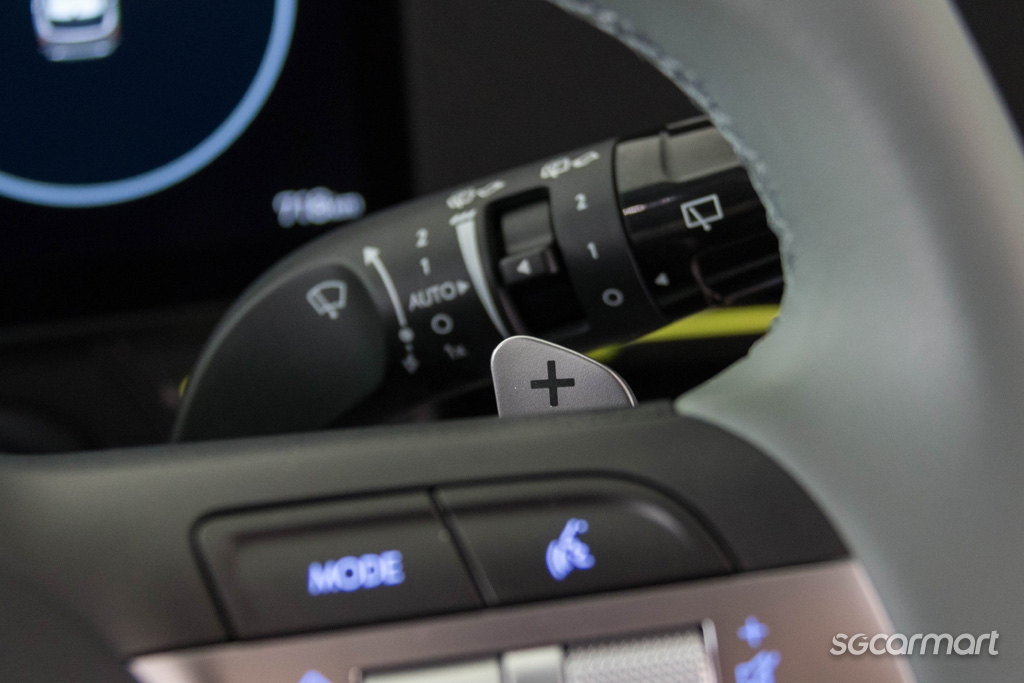
The 1.6-litre Smartstream GDi engine paired with an electric motor puts out a combined output of 129bhp and 265Nm of torque. Sitting at the limit of Cat A COE, the Kona isn't particularly powerful, but there's more than enough power for a breezy everyday drive. Put it in Sport mode, drop it into a lower gear and off you go. Like the Niro Hybrid, the flappy paddles on the Kona Hybrid control regeneration level while in Eco mode and gear changes in Sport mode - a nifty and thoughtful design.
However, unlike the Niro, the Kona Hybrid's internal combustion engine comes alive more often, even during light acceleration off the line. While this might be for the sake of a livelier, peppier drive, it is also likely to be the reason for its higher fuel consumption when compared against the former - with the Niro Hybrid I managed to achieve 19.6km/L, but I was only able to achieve 17.2km/L with the Kona Hybrid.
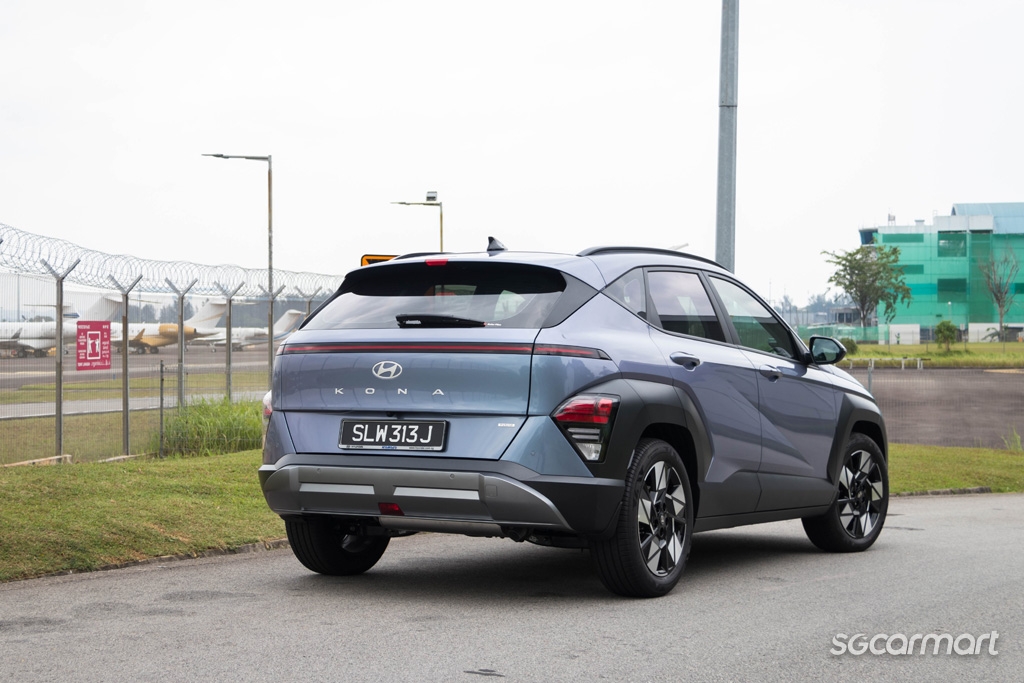
I would attribute this towards the sportier inclination of the Kona (the original Kona was once offered with a manual transmission!). Dynamism is clearly of some importance to the Kona's engineers - even the suspension damping has been engineered very slightly towards the stiffer side. Chassis control of the Kona is great for a crossover with raised ride height - all it needs are some better tyres to bring the cornering performance up a notch. While it is very compliant and comfortable on most roads, you will still feel the sharper bumps and dips on uneven surfaces.
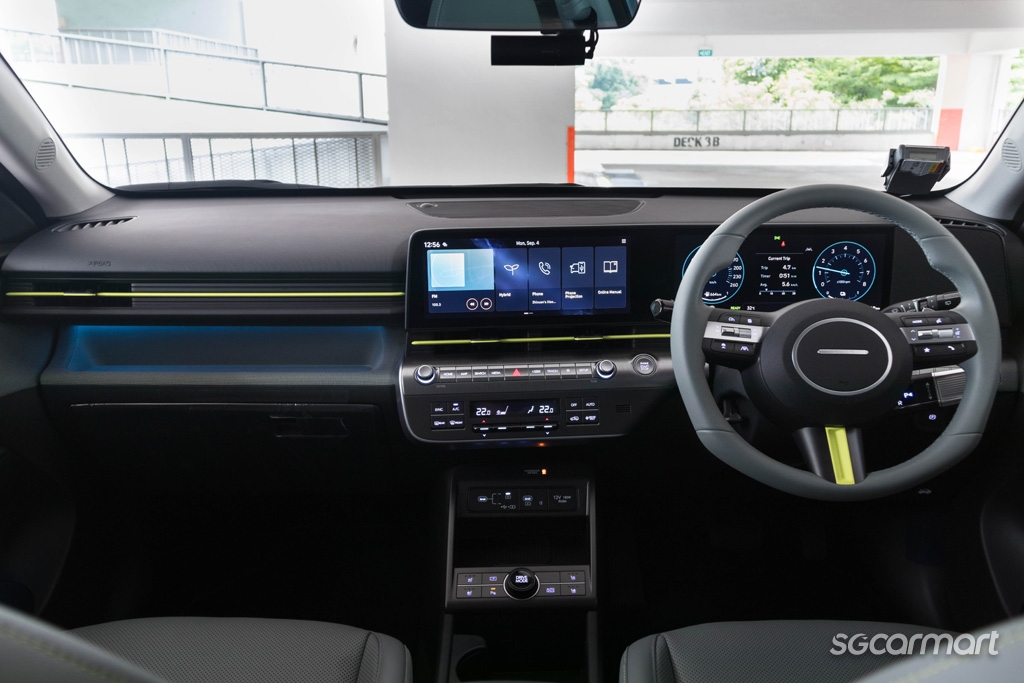
A well-built and well-equipped space
Hop inside the Kona Hybrid and you'll see quite a fair bit of similarities to the Ioniq 6. Like the latter, the gear selector of the Kona is situated below the wiper stalk - this design decision frees up the centre console for a large cubbyhole with retractable cup holders. The rest of the interior is well built, and the texture of the plastics used feel quality as well - Hyundai also peppered the interior with lime green accents to highlight the car's funky nature.
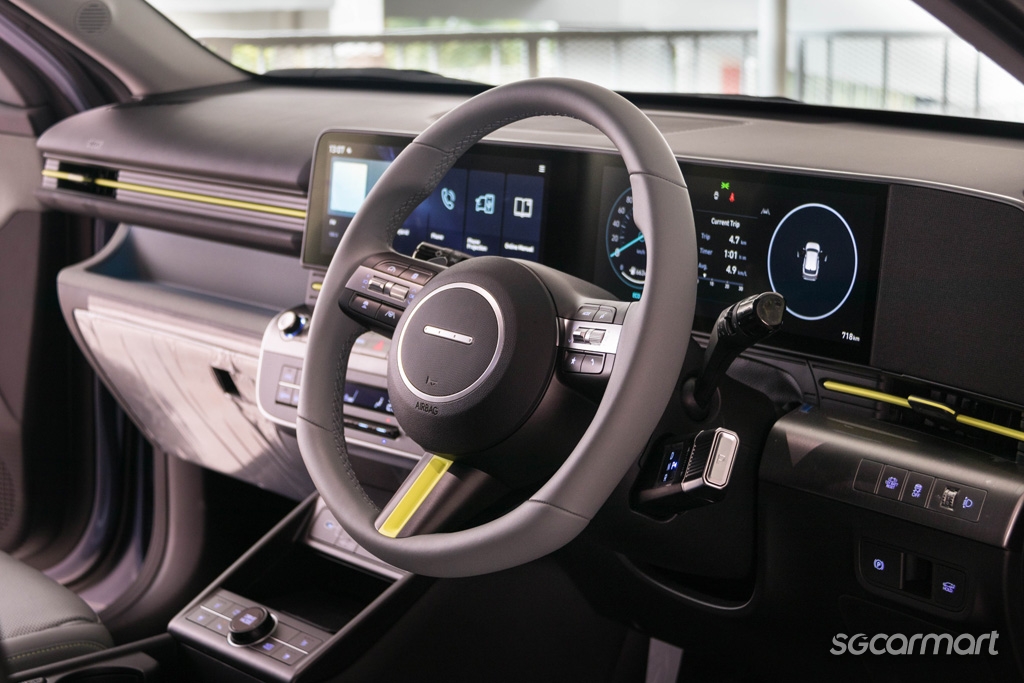
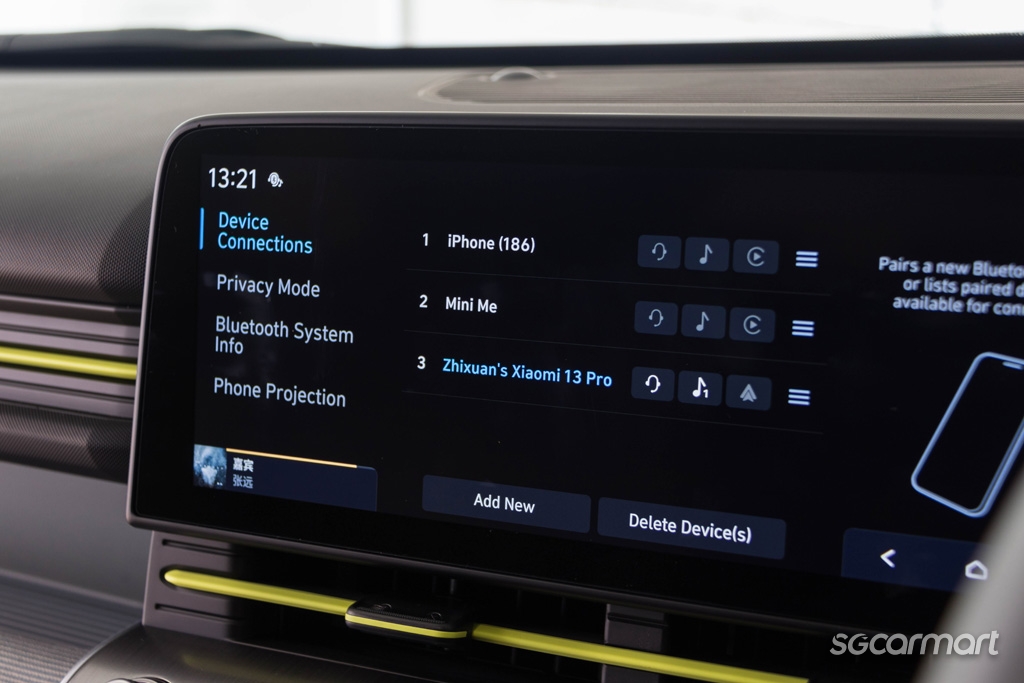
Sitting in the driver's seat, you'll notice yet another familiar sight - the dual 12.3-inch displays sitting on the same plane, tilted slightly towards you. The large 12.3-inch infotainment system has an intuitive smartphone-like interface, much like the one in the Ioniq 6. While there is wireless Android Auto and Apple CarPlay, I wasn't able to connect my Xiaomi 13 Pro wirelessly, and had to use a wired connection - though this is likely a minor software bug that could be resolved with future updates.
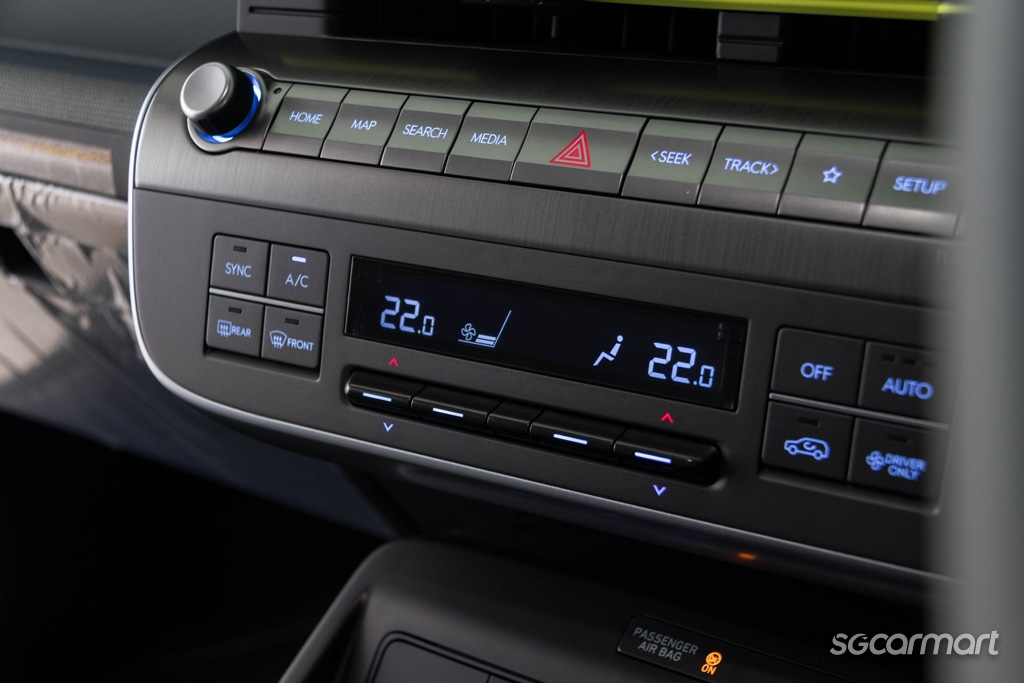
The Kona also has a feature that is getting rather rare these days - physical buttons and toggle switches for the climate control. While it might not look as modern and chic, many people will agree that physical buttons are easier to use on the go.
As we've come to expect of cars from Hyundai, the interior of the Kona Hybrid is decidedly well-equipped. There's a sunroof to let more light into the cabin, the front seats are electric and ventilated, there are plenty of USB ports along with a wireless charger to keep your devices charged, and there's also ambient lighting with 64 colours to set the mood just right.

Practicality is yet another strong suit of the Kona - despite being a compact crossover, the new Kona has grown a little in size, and this translates to a spacious and comfortable cabin. Leg room has grown by 77mm, and the headroom in the rear seats is now 11mm taller. Couple these enhancements with the use of slimmer seats, and the interior space for the passengers is now maximised - the rear will fit three adults in relative comfort.

The Kona also comes with a powered tailgate that opens to reveal a boot space of 466 litres that can be expanded to 1,300 litres, so you won't have to worry about space when going on a grocery run or a shopping spree.
On the go, the great noise insulation means you won't be overly bothered by wind noise or other vehicles - the most prominent disturbance is the road and tyre noise, which isn't even to the point of being distracting.
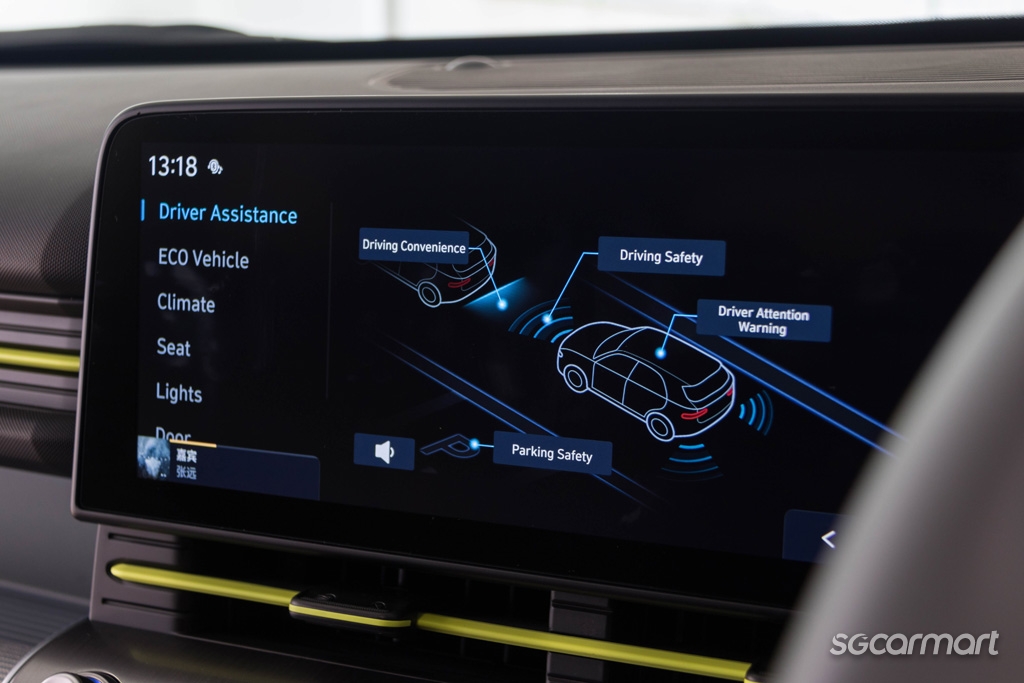
The complete package with all you need, along with high-tech driving assistance.
The Kona Hybrid offers a comfortable ride, drives effortlessly and is very well equipped - Hyundai's latest SmartSense driver assistance system is one of those that work particularly well. The various sensors work together to provide warnings for Forward Collision Avoidance, Blind Spot Collision Avoidance, and Rear Cross Traffic Collision Avoidance, but the feature that stood out was the cruise control system.
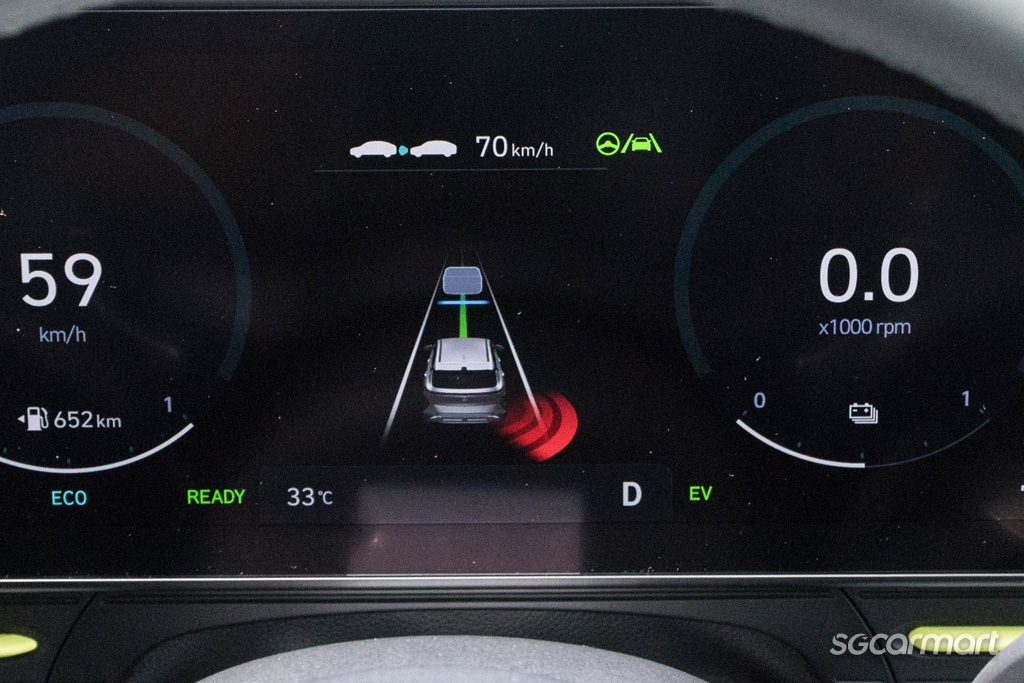
Hyundai's Smart Cruise Control works with its Lane Keeping and Lane Following Assist to allow a relaxing, effortless drive on the expressways - unlike other systems that can be slightly slow to react, Hyundai's system works quickly and seamlessly, keeping its lane and reacting quickly to other vehicles' abrupt movements.
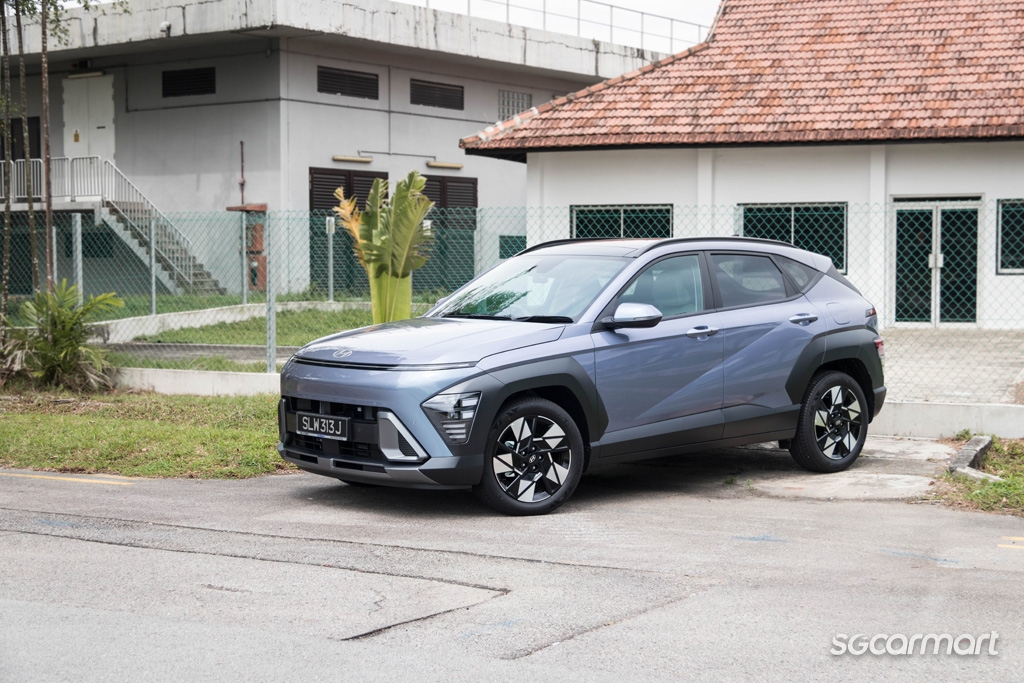
With all the features and driver assists that you'll want, plenty of practicality, an easy drive, and funky looks to boot, the Kona Hybrid is a great choice in the crossover segment. In fact, in the current market, I believe the Kona Hybrid, along with the Niro Hybrid, offers some of the best value propositions in its class.
While there's also the Toyota Yaris Cross Hybrid Excite and the Suzuki S-Cross, which are both priced around $15,000 lower, the Kona has a smoother and more refined powertrain along with a nicer interior - considering all that it offers, I am inclined towards the Kona Hybrid.
Read the full article here:
https://www.sgcarmart.com/articles/car-reviews/hyundai-kona-hybrid-review-33708?GASRC=sgcm
Test drive the Kona Hybrid here: https://hyundai.com.sg/test-drive

